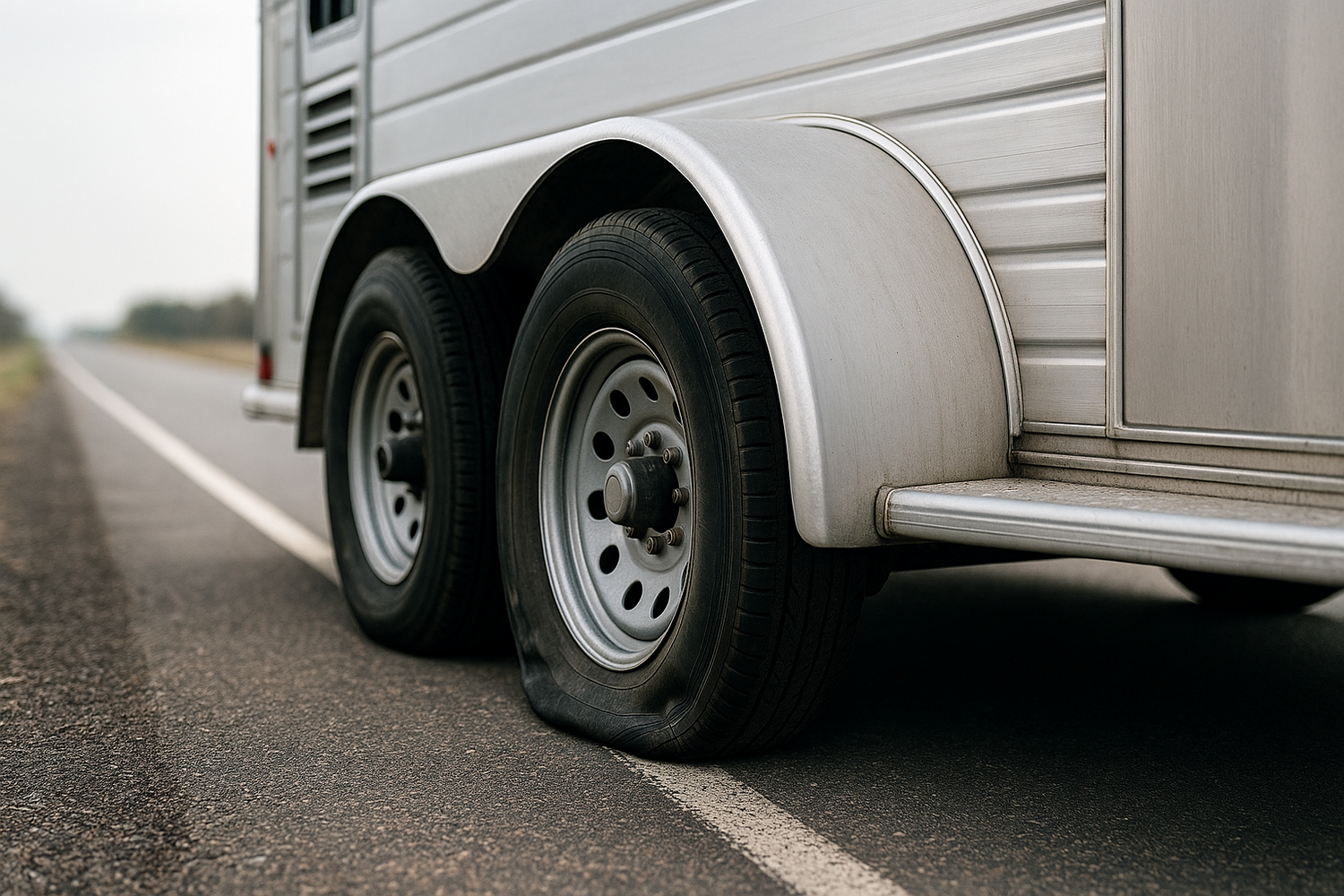Maintaining the right tire pressure is crucial for the safety and performance of your travel trailer. An efficient tire pressure monitoring system (TPMS) plays an essential role in this regard. When tires are inflated to the correct pressure, they provide optimal traction, stability, and fuel efficiency. However, driving with under-inflated or over-inflated tires can lead to serious consequences.
Here are some reasons why monitoring tire pressure is important:
- Enhanced Safety: Proper tire pressure reduces the risk of blowouts and accidents. A TPMS alerts you to any significant pressure drops, allowing you to address issues before they lead to catastrophic failures.
- Improved Fuel Efficiency: Tires that are inflated correctly optimize fuel consumption. Under-inflated tires can increase rolling resistance, leading to higher fuel usage.
- Extended Tire Life: Regular monitoring helps you maintain tires at their ideal pressure, which prevents uneven wear and prolongs their lifespan.
- Better Performance: Correct tire pressure improves handling and braking, ensuring a smoother ride and better control over your travel trailer.
With the right tire pressure monitor in place, you can easily keep track of your tire's health while on the road. Tow with peace of mind, knowing that trailerwatchdog is standing guard. Visit trailerwatchdog.com to learn more about our innovative monitoring solutions!
Key Features to Look for in Tire Pressure Monitors

When choosing the best tire pressure monitor for travel trailers, it’s essential to consider several key features that enhance functionality and reliability. Here are some important aspects to keep in mind:
- Real-Time Monitoring: A good TPMS provides real-time data, allowing you to monitor tire pressure and temperature continuously. This feature enables you to respond quickly to any irregularities.
- Alerts and Notifications: Look for systems that offer audible or visual alerts when tire pressure falls below or exceeds recommended levels. Immediate notifications can help prevent accidents and tire damage.
- Wireless Connectivity: Many modern monitors use Bluetooth or Wi-Fi to connect to your smartphone or dedicated display. This feature allows for easy access to tire data and enhances user convenience.
- Durability: Ensure that the TPMS is built to withstand harsh weather conditions and rough terrains. A durable monitor will provide long-lasting performance, especially for travel trailers that endure various environments.
- Multi-Tire Monitoring: For those with larger trailers or multiple axles, a system that can monitor multiple tires simultaneously is crucial. Look for products that can handle the number of tires your trailer has.
By focusing on these features, you can select a tire pressure monitor that not only meets your needs but also enhances your travel experience.
Top Tire Pressure Monitors for Travel Trailers

When it comes to ensuring the safety and performance of your travel trailer, investing in a reliable tire pressure monitor is crucial. Below are some of the top tire pressure monitors designed specifically for travel trailers:
- TPMS Model A: This advanced monitor features real-time data display with an easy-to-read screen. It provides alerts for both tire pressure and temperature, making it a favorite among travelers.
- TPMS Model B: Known for its durability, this model is built to withstand extreme weather conditions. It offers wireless connectivity to mobile devices, allowing users to monitor tire data seamlessly.
- TPMS Model C: This system supports multi-tire monitoring, making it ideal for larger trailers. With its robust alert system, it ensures that you are promptly notified of any tire issues.
- TPMS Model D: Featuring a user-friendly interface, this monitor excels in providing accurate readings and alerts. It also boasts a long battery life, reducing the need for frequent replacements.
- TPMS Model E: This budget-friendly option doesn’t compromise on quality. It offers essential monitoring features and is perfect for those new to using tire pressure monitors.
Each of these monitors has unique features tailored to enhance your travel safety and convenience. Choosing the right one can significantly impact your journey, ensuring that your trailer remains in optimal condition on the road.
How to Install a Tire Pressure Monitor System

Installing a tire pressure monitor system (TPMS) on your travel trailer can seem daunting, but with a little guidance, it can be a straightforward process. Here’s a step-by-step guide on how to properly install a TPMS:
- Choose the Right Location: Begin by selecting a location for the main display unit. It should be easily accessible and visible while driving, typically mounted on the dashboard or center console.
- Prepare the Sensors: Most TPMS kits come with valve stem sensors that need to be attached to each tire. Before installation, ensure that the sensors are compatible with your trailer's tire specifications.
- Remove Valve Caps: Carefully remove the valve caps from each tire. This will allow you to attach the sensors directly to the valve stems.
- Attach the Sensors: Screw the sensors onto the valve stems, ensuring they are tightened securely but not over-tightened. This step is crucial to prevent air leaks.
- Connect the Display Unit: Follow the manufacturer’s instructions to connect the main display unit. This usually involves plugging it into a power source and pairing it with the sensors.
- Test the System: Once everything is installed, check the system for proper functionality. Inflate the tires to the recommended pressure and ensure that the monitor accurately displays the readings.
Regularly check the system to ensure everything is functioning properly, and consider referring to the manufacturer’s manual for specific troubleshooting tips. By following these steps, you can enhance your travel trailer's safety and performance.
Maintaining Your Tire Pressure Monitoring System

To ensure the longevity and accuracy of your tire pressure monitoring system (TPMS), proper maintenance is essential. Here are some vital tips to keep your TPMS functioning optimally:
- Regularly Check Tire Pressure: Make it a habit to check your tire pressure manually at least once a month, even if your TPMS is operational. This practice helps verify the accuracy of the readings provided by the system.
- Inspect Sensors Periodically: Examine the sensors for any signs of damage or corrosion. Any physical wear can affect their performance. If you notice any issues, consider replacing the sensors promptly.
- Update Software: Many modern TPMS units come with software that may require periodic updates. Check the manufacturer's website or user manual for any available updates to enhance functionality and security.
- Replace Batteries as Needed: Some TPMS sensors are battery-operated. Be aware of battery life and replace them as necessary to avoid system failures.
- Maintain Cleanliness: Keep the sensors and valve stems clean from dirt and debris. A clean installation ensures accurate readings and prevents interference with the system's operation.
- Seek Professional Help: If you encounter persistent issues with your TPMS, don’t hesitate to consult a professional. They can help diagnose and resolve more complex problems that may arise.
By following these maintenance tips, you can ensure that your tire pressure monitoring system remains a reliable tool for enhancing road safety and performance.
Conclusion: Choosing the Best Tire Pressure Monitor
In conclusion, selecting the best tire pressure monitor for your travel trailer is a crucial step towards ensuring safety and performance while on the road. With a variety of options available, it's essential to consider several factors to make an informed decision:
- Accuracy: Look for monitors that provide real-time and precise pressure readings to prevent any potential issues during your travels.
- Durability: Choose a system built to withstand various weather conditions and rough terrains, ensuring it can endure the rigors of travel.
- Ease of Installation: Opt for a monitor that is simple to install and doesn't require extensive tools or expertise.
- Alerts and Notifications: Select a system that offers immediate alerts for low tire pressure or temperature changes, allowing you to react swiftly to any issues.
- Battery Life: Consider the battery life of the monitoring system, as longer-lasting batteries will reduce maintenance and ensure continuous monitoring.
By taking these factors into account, you can confidently choose a tire pressure monitor that meets your needs and enhances your travel experience. Tow with peace of mind, knowing that trailerwatchdog is standing guard.








